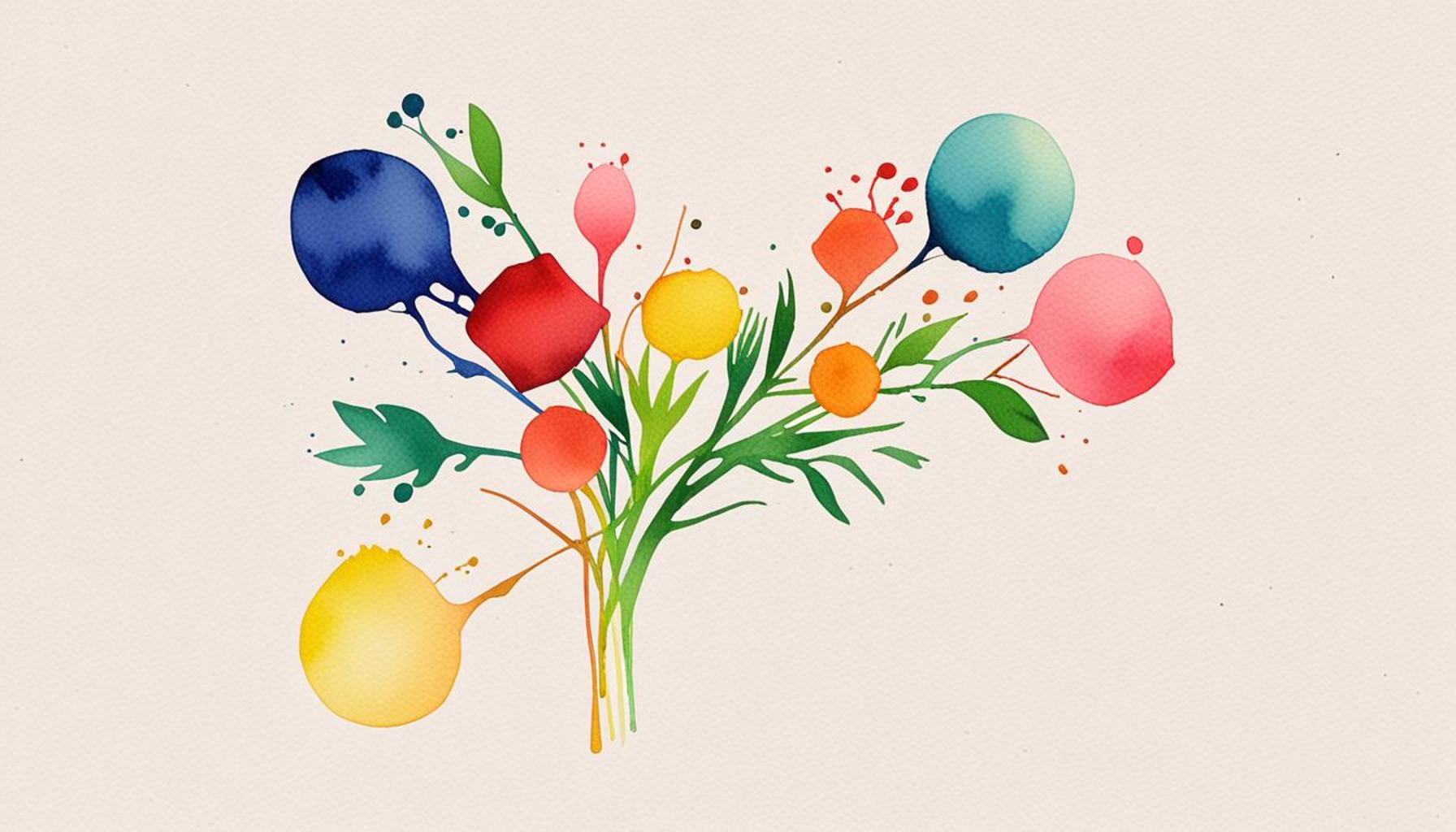Intentional Design and the Art of Saying No: How to Prioritize the Essential in a World Full of Options

Understanding the Landscape of Choices
The reality of living in an information-rich society is that we are bombarded with a multitude of choices on a daily basis. From selecting the best smartphone to choosing a career path that may shape our futures, the plethora of options can often lead to decision fatigue. This modern phenomenon prompts a critical examination: How do we sift through the noise of countless options and determine what holds true value in our lives?
One effective strategy to combat overwhelming choices is the practice of intentional design. This concept hinges on making deliberate decisions that resonate with our intrinsic values and life goals. For example, when selecting a new job, rather than focusing solely on salary or prestige, individuals can ask themselves questions like: Does this position align with my passions? Will it contribute positively to my long-term career objectives? Such introspective questioning can steer us towards more meaningful choices that foster both personal and professional growth.
- Identifying the essential elements in our lives, such as relationships that nurture us and pursuits that ignite our creativity, is crucial.
- Recognizing distractions—like social media or commitments that do not align with our goals—empowers us to reclaim our time and focus.
- Spotting opportunities for enhancing our well-being might include seeking out activities or environments that promote mental and emotional health, such as mindfulness practices or community engagement.
The Power of ‘No’
Equally significant in this exploration is the art of saying no. The ability to politely decline invitations, projects, or opportunities that do not contribute to our priorities can be a liberating practice. For instance, a burgeoning entrepreneur may face numerous networking events or collaborations. However, by assessing each opportunity against their goals, they can discern which engagements will propel them forward and which will merely divert their attention. The message here is clear: saying no isn’t about denying oneself opportunities; rather, it is about creating the space needed for growth and focus.
Many influential figures across various domains have underscored the power of rejection as a gateway to clarity. Thomas Edison, known for his relentless inventions, famously said, “I have not failed. I’ve just found 10,000 ways that won’t work.” His ability to reject unsuccessful strategies ultimately led to groundbreaking innovations that changed the world. Similarly, artists such as Steve Jobs have illustrated that focusing on a limited number of projects can yield greater success than dispersing efforts across too many fronts.
As we delve into the notions of intentional design and strategic rejection, consider how these practices can revolutionize your own life. By fostering a mindset that prioritizes meaningful engagement over mindless consumption, we can promote not just efficiency, but a richer, more fulfilling existence in a world replete with choices. This thoughtful approach encourages us all to be discerning in our selections, leading to an empowered and purpose-driven life despite the cacophony of options around us.

DISCOVER MORE: Click here to enhance your workspace
Embracing Intentional Design in Decision-Making
In a world overflowing with options, embracing intentional design can serve as a powerful antidote to choice overload. This approach shifts our focus from mere reactionary decision-making to proactive, purpose-driven choices that reflect our values and long-term aspirations. By intentionally designing our lives, we invite a coherence that can often feel elusive amidst the chaos of endless possibilities.
The first step in this transformative process is to develop a clear understanding of what truly matters to us. Individuals can start by conducting a personal inventory of their values and defining what success looks like in various domains—career, relationships, health, and personal growth. To facilitate this process, consider crafting a vision board or a mind map that articulates these priorities. A visual representation can spotlight essential elements while making the intentions more tangible and relatable.
Moreover, understanding the factors that influence our decisions can lead to more profound insights. Here are several aspects to explore:
- Core Values: Identifying what drives you—be it integrity, creativity, or community—can provide a foundational compass for navigating choices.
- Life Goals: Visualize your future self and the milestones you wish to achieve. Goals can range from career aspirations to personal wellness, and recognizing them can help parse through options that do not align with these objectives.
- Current Commitments: Assessing existing commitments is crucial. Are they nurturing your growth, or are they simply occupying your time? This reflection enables better allocation of energy and resources.
- Priority Alignment: Each choice should ideally align with your identified values and goals. When faced with options, scrutinize how they contribute to or detract from your overall vision.
Applying this intentional design approach can enhance not only personal satisfaction but also efficiency in decision-making. For instance, consider the case of entrepreneurs who often juggle multiple responsibilities. By using intentional design principles, they can prioritize projects that directly advance their company’s mission while sidelining those that impose unnecessary distractions. This clear decision-making process fosters greater focus, ultimately driving entrepreneurial success.
As we embark on this journey towards intentional design, it is vital to recognize the external influences that can cloud our judgment. Advertising, social media, and societal expectations often promote a fear of missing out, compelling us to opt into countless activities and options. To break free from this cycle, practice mindfulness when faced with decisions. Pause, reflect, and align your choices with your intentional design. A moment of deliberation can prevent hasty decisions that might lead to a diluted focus and energy.
In summary, intentional design encourages us to craft a life that resonates with purpose. By recognizing what matters most, we can streamline our decision-making and filter out the excess noise of challenges. This approach not only leads to a more fulfilling existence but strengthens our ability to say no—to opportunities, engagements, and distractions that do not serve our greater vision. Embracing this practice can indeed pave the way for a life rich with intention and clarity, even in an overwhelmingly option-filled environment.
| Key Advantages | Incorporating Intentional Design |
|---|---|
| Enhanced Clarity | By focusing on what truly matters, individuals can develop a clearer vision for their goals. |
| Reduced Overwhelm | Prioritizing the essential leads to less mental clutter and a more peaceful state of mind. |
| Empowered Decision Making | Intentional design fosters skills that allow individuals to say no without guilt, making choices that align with their core values. |
| Increased Productivity | With a focus on essential tasks, efficiency increases, leading to better results in various endeavors. |
In an age where options seem limitless, the practice of intentional design becomes invaluable. It allows individuals to sift through the noise and concentrate on what truly drives fulfillment and progress. Embracing the art of saying no serves not merely as a rejection but as a powerful affirmation of one’s values and priorities. For example, by strategically eliminating choices that do not resonate with personal goals, individuals can discover greater clarity in their pursuits. This leads to a profound sense of purpose, positioning them to make informed decisions that lead to effective outcomes. In this exploration of prioritization, readers are invited to delve deeper into how minimalism paired with intentional choices leads to a more enriched life.
DIVE DEEPER: Click here to discover more about intentional design
The Power of Saying No
At the heart of intentional design lies a pivotal skill that many struggle to master—the art of saying no. In an environment saturated with options, the ability to reject opportunities and engagements that do not align with our intentional design becomes crucial for maintaining focus and achieving our goals. Understanding how to navigate the delicate balance between accepting new possibilities and safeguarding our time can fundamentally impact our overall satisfaction and productivity.
To effectively say no, it is essential to understand the emotional and psychological barriers that often accompany this practice. Many individuals fear disappointing others or feel guilty about declining requests, leading to an overwhelming sense of obligation. Cultivating a mindset of assertiveness is vital in overcoming these barriers. Recognize that every time you say yes to something that does not resonate with your core values, you inevitably say no to opportunities that truly matter. This duality becomes a guiding principle for intentional decision-making.
To bolster your ability to say no, consider employing a few practical strategies:
- Establish Boundaries: Define clear boundaries for your time and commitments. This may include setting limits on work hours, social engagements, or even digital communication. Communicating these boundaries to others builds mutual respect and reduces the pressure to comply with every request.
- Use a Decision-Making Framework: Develop a personal rubric for evaluating opportunities. Questions such as “Does this align with my goals?” or “Am I passionate about this cause?” can guide your response. By applying a structured approach, decisions become less emotionally charged and more logical.
- Practice Saying No: Like any skill, the art of saying no benefits from practice. Start with smaller commitments—declining invitations to events or projects that do not excite you. Over time, this small exercise strengthens your resolve and confidence to say no to larger requests.
- Offer Alternatives: When saying no, consider suggesting alternatives or compromises. This approach maintains goodwill and shows that you value the relationship. For instance, if a colleague seeks your help on a project, you might decline while offering to connect them with someone else who has the availability or expertise.
Recent research emphasizes the growing importance of saying no in a professional context. A study published in the Harvard Business Review highlighted that employees who set clear boundaries were not only perceived as more competent leaders but also experienced lower stress levels and improved job satisfaction. This evidence contradicts the age-old belief that saying yes at all costs is the key to career advancement.
Additionally, technology plays a crucial role in emphasizing the need to say no. The digital arena, with its social media platforms and constant news feeds, bombards users with endless options, ultimately maxing out attention spans. The phenomenon of decision fatigue suggests that the more choices we face, the harder it becomes to make sound decisions. By consciously exercising the art of saying no within this context, you can reclaim your time and mental space for what truly matters.
In effect, mastering the ability to say no is not simply about declining invitations or eliminating distractions; it is a profound exercise in prioritizing what aligns with your intentional design. Adopting this practice fosters a sense of empowerment, allowing individuals to create life experiences that resonate deeply with their personal and professional goals, paving the way for a more intentional and fulfilling existence.
LEARN MORE: Click here for effective decluttering tips
Embracing Intentional Choices
As we navigate a world overflowing with options, intentional design becomes more than just a concept; it transforms into a vital skill set centered around the art of saying no. By actively choosing to decline opportunities that do not contribute to our core values or long-term goals, we not only reclaim our time and mental resources but also pave the way for more meaningful experiences. This conscious decision-making fosters a sense of clarity and direction, empowering individuals to curate their lives with purpose.
The importance of saying no extends beyond personal well-being; it plays a significant role in workplace dynamics and overall productivity. When we set boundaries, we cultivate an environment where mutual respect flourishes, enabling others to recognize the importance of our time and contributions. Research increasingly supports the notion that leaders who assertively decline non-essential commitments are perceived as more competent and experience greater job satisfaction. These findings highlight an essential shift in contemporary workplace culture, emphasizing quality over sheer quantity.
In addition, engaging with technology in a balanced manner is critical to combatting decision fatigue. By being mindful of how we allocate our attention, we can redirect focus toward endeavors that truly resonate with our aspirations. Ultimately, the mastery of saying no is about recognizing the transformative power of intentionality—allowing individuals to curate a fulfilling journey that reflects their passions and values.
Therefore, as we move forward in this complex landscape, let us embrace the challenge of prioritizing the essential. By doing so, we can carve a path that not only leads to personal growth but also contributes positively to the broader community, inviting others to engage in a life marked by intention and authenticity.


